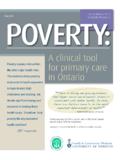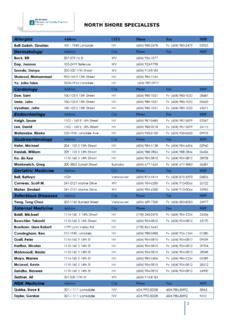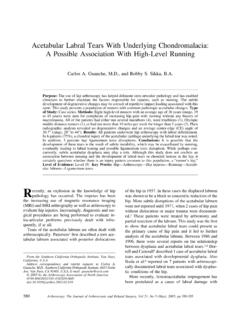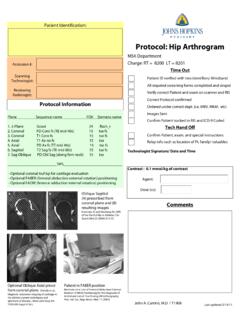Transcription of Guidelines for Prioritization of MRI STUDIES VCH …
1 Page 1 Guidelines for Prioritization of MRI STUDIES VCH April 6 2005 In order to maximize effective utilization of the MRI scanners in VCH, a MRI radiologist will prioritize all requisitions for MRI examinations, according to an established set of priority Guidelines . Highest priority will be given to examinations that are likely to directly affect patient management, where MRI is the best available modality to answer the clinical question, and those in which there is urgency in making the diagnosis with MRI prior to instituting therapy. Lesions in which the diagnosis is known, and for which immediate treatment is not necessary, or lesions that by history and physical findings do not require immediate treatment but require prompt evaluation, will be given a second level of priority.
2 Follow-up STUDIES on patients with stable findings or lesions in which slow progression might occur, or those for which urgent surgery is not required, will be given a third level of priority. The wait times suggested for MRI STUDIES in the Prioritization Guidelines are the recommended maximum wait times for patients with the conditions listed, based on what we feel is an appropriate balance between limited access and patient need. The actual wait times for patients may be different depending on demand and availability of scanning time. This guideline document is not designed to be all-inclusive. The ultimate responsibility for Prioritization rests with the attending radiologist after consultation with the referring physician. Also, within a given category, some conditions will be considered more urgent than others they are not all equal, nor are they ranked within a category.
3 MRI Prioritization EMERGENT 0 3 Hours Acute spinal cord/cauda compression 3 24 Hours Spine trauma with incomplete cord injury pre-op Acute stroke (usually investigated with CT only) Acute hydrocephalus selected cases, pre-op Diagnostic Imaging Jim Pattison Pavilion Room G940-899 West 12th Avenue Vancouver, BC V5Z 1M9 Tel 604:875:4355 Fax 604:875:5498 Page 2 URGENT 24 Hours 1 Week Spine trauma, ? ligament injury Subacute cord/cauda compression Discitis/osteomyelitis/epidural abscess Known intracranial or spinal neoplasm pre-op Encephalitis Acute hydrocephalus pre-op Cerebral venous thrombosis symptomatic Vasculitis Progressive optic neuropathy NYD Pituitary macroadenoma with visual loss pre-op Known head/neck malignant neoplasm pre-op AVN any joint or bone Acute osteomyelitis Primary sarcoma of bone or soft tissue.
4 Acute joint injury if MRI will determine need for surgery. At present, this is primarily knee evaluation, but may include elbow and ankle. All requests in this category must be by telephone consultation from the staff orthopedic surgeon to the staff radiologist. Muscle necrosis or compartment syndrome (if CT is indeterminate) R/O occult fractures from ER: Hip / Scaphoid (if CT is indeterminate) Any imaging scenario in which emergent IV contrast-enhanced CT is otherwise indicated, but the patient has significant contrast allergy (moderate or severe based on ACR criteria) or is in renal failure. Urgent cases in pregnant women (beyond the first trimester) in which US is inconclusive. Eg: abdominal pain and sepsis query appendicitis or renal colic. For patients in the first trimester, the risk to the fetus vs the benefit of the exam must be discussed between the referring physician and radiologist.
5 Myocardial viability STUDIES in preparation for surgical or interventional cardiology cardiac revascularization. Cardiac tumours. Lung carcinoma with suspect mediastinal or cardiac invasion. SEMI-ELECTIVE: 1 4 Weeks Progressive myelopathy Acute lumbar/cervical radiculopathy selected cases Syringomyelia with clinical progression ? MS rapidly progressive Known MS - ? therapy candidate Cerbrovascular disease posterior fossa disease, or if CTA contraindicated ? Vasculitis Progressive cavernous malformation, symptomatic Orbital tumour, assessment of intracranial extent, pre-op Preoperative assessment of possible mediastinal or chest wall invasion by tumor if CT is in conclusive. Preoperative assessment of renal vascular invasion by renal cell carcinoma if ultrasound or CT is inconclusive. Page 3 MRCP MRA s (where good quality CT or conventional angio not possible) R/O abscess, CT inconclusive or negative Further characterization of mediastinal and apical masses, apical chest masses where CT inconclusive.
6 Staging of invasive carcinoma of the bladder (if IV enhanced contrast CT is inconclusive or is contraindicated) and prostate. Further assessment of focal hepatic lesion to differentiate between hemangioma and other conditions, if US, CT and NM inconclusive. Further hepatic evaluation for additional focal lesions prior to resection for neoplastic disease. Staging of cancer of the vagina, cervix, vulva and uterus. Ovarian mass evaluation Breast MRI: known diagnosis of carcinoma and breast conserving surgery planned, or high risk of contralateral neoplasm ( , lobular ca). Any imaging scenario in which semi-elective IV contrast-enhanced CT is otherwise indicated, but the patient has significant contrast allergy (moderate or severe based on ACR criteria) or is in renal outlet syndrome with progressive neuropathy ELECTIVE : 4 16 Weeks Lesions in which the diagnosis is known and immediate treatment is not necessary, or lesions which by history and physical findings do not require immediate treatment but do require prompt evaluation.
7 The results of the MR study will likely alter patient management and provide additional information for surgical management. Stable cervical spondylotic myelopathy Stable thoracic myelopathy Lumbar spinal stenosis selected cases, pre-op Vasculitis F/U Malignant intracranial tumour, F/U ? ALS Known head/neck benign neoplasm pre-op Locking joint knee, elbow, ankle. Bone and soft tissue tumors likely to be benign. Chronic osteomyelitis. Strong suspicion of vascular necrosis if plain film, nuclear medicine or CT inconclusive, or evaluation of opposite hip if surgery contemplated. Complex congenital heart disease. Evaluation of diseases of the great vessels, if further characterization is required after CT, or where iodinated contrast allergy makes MR the choice for initial evaluation of abnormalities of the aorta and pulmonary artery.
8 Pretransplant assessment of hepatic vasculature and or biliary anatomy. Cardiac r/o ARVD Any condition in a pregnant patient (beyond the first trimester) in which US is inconclusive. For patients in the first trimester, the risk to the fetus vs the benefit of the exam must be discussed between the referring physician and radiologist. Any imaging scenario in which elective IV contrast-enhanced CT is otherwise indicated, but the patient has significant contrast allergy (moderate or severe based on ACR criteria) or is in renal failure. Page 4 Routine : 16 - 32 Weeks This category includes cases where MRI is required for follow-up on patients with stable findings or patients in whom lesions may undergo slow progression or those for which surgery is not required or limited therapeutic options are available.
9 Spine tumor F/U Syringomyelia F/U Benign intracranial tumour F/U Post tumour resection F/U ? MS Known MS, F/U Sensorineural hearing loss, R/O acoustic Chronic epilepsy ? Mitochondrial disorder Facial or head/neck vascular malformations Head/neck neoplasm F/U Chronic joint symptoms where other forms of investigations have been performed and are inconclusive. Shoulder for possible rotator cuff or labral tears Elbow chronic elbow pain, query loose body CT better if calcified, MR if not Wrist query TFCC tear, tear of ligaments of proximal carpal row, occult dorsal ganglion, tendon abnormalities Hip chronic pain, query labral tear Knee chronic or bilateral pain, patellofemoral syndrome / chondromalacia Ankle chronic pain, query osteochondral lesions talar dome, tendon abnormalities Foot query Morton s neuroma/soft tissue mass Fingers tendon injuries/pulley injuries Follow-up aortic dissection Temporomandibular joint-internal derangement.
10 Pre-uterine artery embolization for fibroids Thoracic outlet syndrome for routine presurgical assessment.















